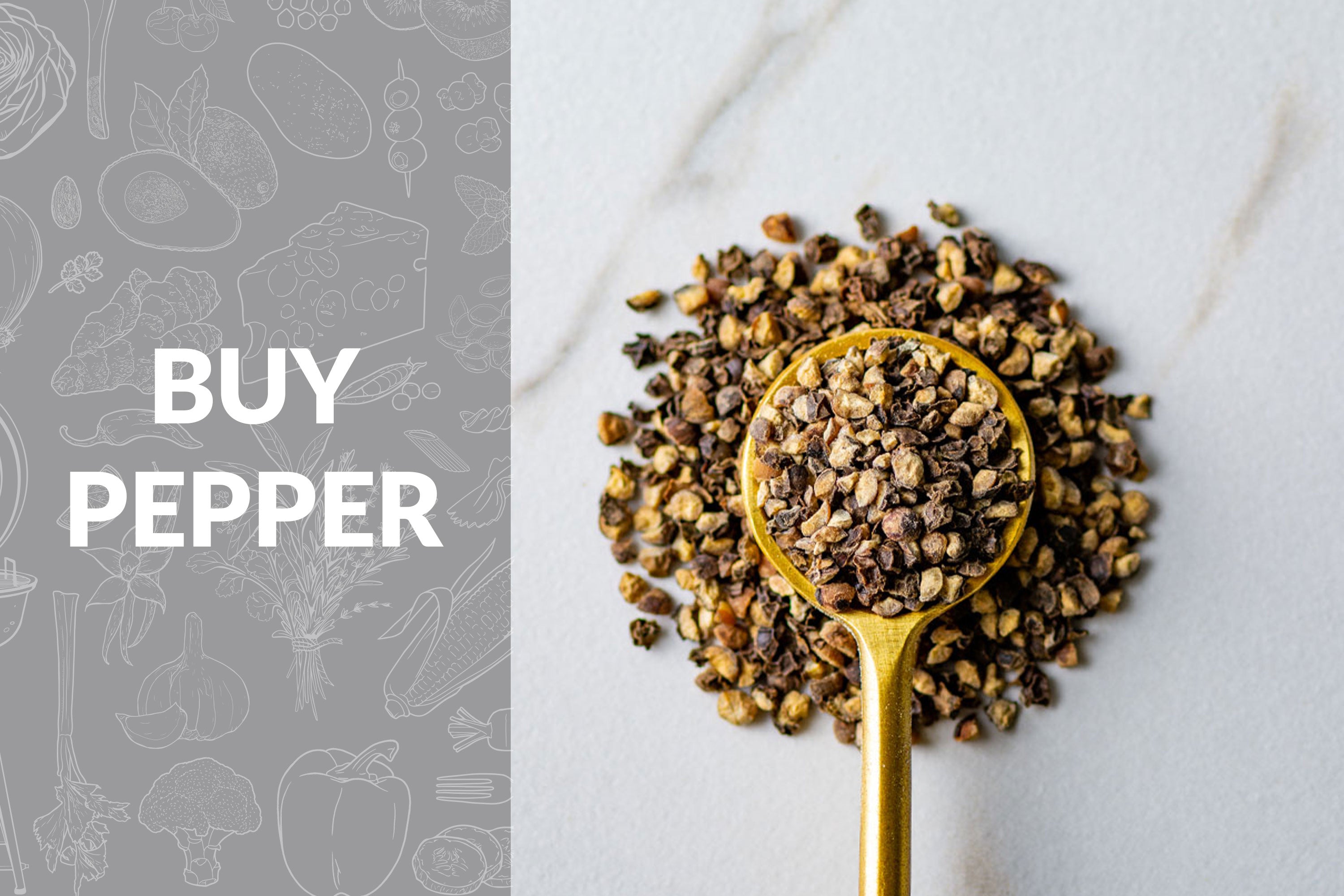Peppercorn Primer

Centuries before crude oil, there was a different “black gold.” Piper nigrum, or black pepper, has long been one of the most popular spices in the world. That seemed a very good reason to delve a little deeper into the prolific peppercorn.
Today’s common pantry spice was once a prized commodity used throughout history as currency, medicine, and even in cultural rituals. Entire books have been devoted to pepper’s long history, but here’s a very abridged version with some of our favorite peppercorn lore:
- Native to India and Asia, the use of pepper dates to at least 4,000 years ago, with ancient texts describing its use as a seasoning.
- Arab traders introduced pepper to the Roman Empire; it’s said that when Rome fell in 410, the conquering Visigoth’s demanded 3,000 pounds of peppercorn as a ransom for the city.
- During Medieval times, peppercorn was so valuable it was used to pay rent, debts, and even marriage dowries.
- Following British colonization of India, pepper became increasingly common and more available to the masses.
- Peppercorns were often used as a preservative in kitchen galleys along the seafaring spice trade routes.
- Today, India and Vietnam produce nearly half of the world’s pepper.
While black pepper is the most common, there are many other varieties of peppercorn. True peppercorn comes from the piper nigrum plant and is available in various colors—black, green, and white—depending on the berry-like fruit’s ripeness and processing. (That’s right, three different peppers from one plant!)
Then there are a series of “fake” peppercorn that can look, smell, and taste like pepper, but do not originate from the same piper nigrum plant. These unique varieties include pink and Szechwan. The next time you reach for that familiar jar of ground black pepper, consider one of these alternatives instead! Or enjoy the best of all worlds with our signature Four Corners Peppercorn, a blend of black, white, green, and pink.
The great thing about such a variety in the world of pepper is that it allows you to experiment without needing to create any wild and crazy dishes. The beloved Italian dish, Cacio e Pepe (pictured above), is the ultimate comfort food (aka grown-up mac & cheese).

Here’s a quick primer on different varieties of peppercorn:
Black Pepper
This slightly ripened, sun dried fruit has a familiar earthy and spicy flavor. To highlight the sharper notes of the peppercorn, combine it with spices like garlic, ginger, cardamom, or even cinnamon. For a more earthy combination, add thyme, cumin, turmeric, or cloves. I know it sounds crazy, but add a pinch of black pepper to pumpkin pie spice to create an Americanized version of Chinese Five Spice.
White Pepper
White pepper is the black peppercorn with the outer husk rubbed off. That’s right, three different types of pepper can come from the same plant! Removing that outer husk lessens the piperine, giving white pepper an earthier, creamier taste. Traditionally used in white sauces and cream soups for keeping a crisp presentation, this pepper also complements the earthy notes in many Asian dishes. It’s the perfect pepper for halibut and other white fish.
Szechwan Pepper
Szechuan is the dried rind from the berry fruit of a prickly ash tree. It has a woody and slightly citrusy flavor, but its most unique attribute is the slight numbing, tingling effect it has on the taste buds. This effect wakes up your mouth and can change the way you taste food. It’s most popularly used in combination with other spices, like star anise and ginger, in Chinese Szechwan cuisine.

Recipes
A quick note: Pepper can be used as a seasoning on just about anything. And while we're giving you a few traditional uses, we also wanted to introduce you to ways to expand your peppercorn palate...including drinks!
Tingly Pineapple Mocktail
This fruity, non-alcoholic mocktail is a sophisticated show-stopper for your next social gathering. Szechwan Peppercorns give it the signature tingle.
Cilantro-Coriander Pickled Jalapenos
This recipe divides to yield 4 (1 pint) jars. Use the seasoning options to experiment with different spice flavors.
Cacio e Pepe
Rainbow peppercorns add a spectrum of color and flavor to this simple dish that translates to "cheese and pepper". It might be simple but it's comfort food at its finest.
Mix and match! Use your favorite pepper in any recipe or explore all of our peppery flavors.


Leave a comment